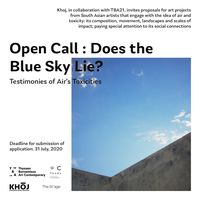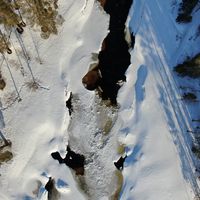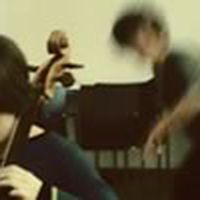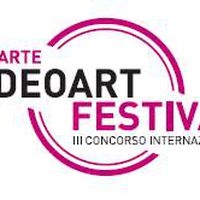Potency of the Invisible | The Sensorial Trail at the National Gallery Singapore

In the age of social media, our ability to share and access imagery has drastically changed our ways of seeing and being. With the use of our handheld devices, we can build our personal profile, construct our stories and instantaneously magnify them alongside millions of others across the globe. Our digital presence has enabled us to be connected beyond the space we occupy. It has, likewise, empowered us to sketch our own image, a public version of what we wish others to see, yet the constancy of posting and viewing has somewhat diverted our sensibilities away from being fully present and focused on what is before and around us.
As a response to the evident power of visual information independently created by the majority who can take a selfie, click on a smartphone camera, upload, share and hashtag a moment, the idea of reversing the form of engagement surfaced with an inquiry on how ways of seeing can be rekindled within the museum context.
How can we make people go beyond viewing and invite them to slow down, look, be self-aware, conscious of details in their surroundings, recognise the importance of unmediated sight and celebrate the power of their senses?
For the 2019 edition of the National Gallery Singapore’s Gallery Light to Night Festival themed Traces and Echoes, the museum invited artists Sissel Tolaas (Norway), Tal Isaac Hadad (France) and Andy Chia (Singapore), to build on a series of festival artwork commission, the Sensorial Trail. This 7-part installation series is made up of intimate art encounters focusing on the sense of smell, touch and sound. These stations spread across various sites serve as an invitation to capture the invisible, or not visual, across the two historical monuments, enabling the public to go on a synesthetic experience of smelling stories, listening to silence, visualising sound, triggering the sense of touch in the absence of physical contact, being moved by a whisper and the details of contact in the creation of sound, seeing and feeling the voices of a humming choir at different stages and intensity.
In setting up such a trail, it provides the opportunity for the visitors to search, find and recognise something that cannot readily be seen yet very much present. The trail bears with it collected stories of young people and places, minute details of quotidian lives, the pauses and the fillers in between the spaces and moments we occupy, and most importantly the senses that operate with us throughout the day even when we are asleep. The Sensorial Trail, therefore, hopes to make the invisible visible and encourage visitors to gaze at the familiar with a fresh set of consciousness.
Each of the artists proposed a unique approach, methodology and artistic medium yet collectively offer works that bear strong resonance towards the understanding of youth culture, identity, multiculturalism and tolerances. Using smell, ASMR videos, midi-player, sound composition and recording, massage therapy and choral singing, the artists illuminate potent and relevant topics even as they extend the invitation to audiences to come up with their interpretations of the works. The interpretation in this case goes beyond coming up with one’s own meaning but involves an active participation in awakening of the senses through viewing, sniffing, touching, humming and listening.
The Sensorial Trail dives right into the festival’s theme by illuminating dichotomies such as old-new, virtual-physical, tangible-intangible, visible-invisible, individual-community, emotional-intellectual, to reveal new insights and perspectives enabling the understanding of oneself and that of others.
Smell Print, Sniffing Youth Identity
It is not often that we are reminded that smelling is something we do naturally 24 hours daily. It’s an inseparable process as we breathe through our noses. In a conversation with renowned scientist and artist, Sissel Tolaas at her Berlin laboratory, she points this out as a response to a naive query why she works with smells. In Sissel’s words,
“We smell a person before we see the person. The information provided through the smell determines our behaviour towards that person. This processing happens subconsciously in most humans. What could happen if we start to consciously be aware of these facts? Tolerance starts with how someone smell, not what the person believes in or the person’s skin colour.”
In the work of Sissel Tolaas, eau d’you Who Am I, she embarked on an investigation on the youth cultures in Singapore and the issue of identity. The Norwegian artist chose a group of multicultural young people aged between 19 and 29, posing a series of questions on the meaning of identity in the world of selfies, Who am I on behalf of how I smell? Does youth culture have identity? Does youth culture have smell ID?
During Sissel’s fieldwork in November 2018, guided by a group of Singaporean youngsters, she visited their favourite spots in the city. As she learned about them, their lifestyle and personal stories, she gathered the smell molecules with her special device. The smell molecules were read, analysed and have undergone scientific processing. With the use of nanotechnology, five distinct smells have been applied on selected walls at the National Gallery Singapore. These are replicas of the smell IDs brought from the various youth hotspots, transported and converted as an artwork. The artist stresses that the process of experiencing smell goes beyond identifying the spot or mapping out the places independently. The layering of the smells in the installation is one way for the visitors to recognise the complexity of smells. What do they trigger? What do they make you remember? Or feel? What images come to mind when your nose touches the wall? While we all have very distinct smell, there is not just one smell that lives or surrounds us. Each one of carries multiple representation of smells that move with us as much as we sanitise, deodorise or cover up the base layer of a particular smell ID.
Sissel, whose research on the subject matter spans over 20 years, believes that smell has the power to trigger memory, feeling, and reaction. The project’s intention is to get visitors to pay attention to smell as a core element of information about a person’s identity.
The presence of the smell work voluntarily and involuntarily calls the visitors attention to revisit and imagine places in Singapore as they encounter their odorous replica on the white walls and in between the spaces they occupy.

Sound of Silence
From one spot to another, Singaporean musician and sound artist, Andy Chia spotlights his local neighbourhood of Punggol through the juxtaposition of soundscapes of nature, urban environment and his ethnic music composition Voices of Time. In his two-part sound installation, listeners are invited to visualise their own composition using a simple midi-controller and eight listening tubes. Andy paints a portrait of his locale, which he perceives as interesting combination of nature, water and urban jungle, through the exploration of the boundaries of sonic experience and incorporation of electronics.
As a third generation Singaporean and at the same time representing the 108th generation of his own family, Andy’s interest on heritage and its relationship with time has continuously found a way to surface in his artistic practice. He sees the need to look and pay respect to one’s heritage. His early beginnings as a traditional Chinese flautist has led him to explore and understand different sounds in relation to history and the present. In his words, Heritage is not just encapsulated in time. It’s always moving forward. For him, heritage is imbedded even in the small corners next to the Singapore permanent galleries, where his sound installations are situated.
In presenting pieces of reality that surrounds him, his family, friends in Singapore through sound, he reaffirms his belief on the auditory response saying, Sound is the first to develop and the last to go in the human cycle. A baby will react to sound first before they react to light. In a city that continues to build and grow itself literally, Andy captured the soundscapes of the usually ignored silence and noise in the city and incorporated them in his own music.
The installation is an invitation to listen as he attempts to tell and reflect on stories about the changing environment we live in through his sound and music composition. His fascination with sound, the work also wishes to articulate how much we are in control of our surroundings and with the touch of a button, we can alter our environment.
Touch on Touch
For the Sensorial Trail, Tal Isaac Hadad demonstrates ‘touch without touching’ with sound-oriented videos Listening Bodies ASMR. Hadad also incorporates the sense of touch and sound in the performance installation Recital for Masseur, Soloist and Mixed Choir, creating a new sensorial experience and redefine the relationship between body and voice.
What stands out in Tal’s approach is the combination of artistic interventions for both Listening Bodies ASMR and Recital for Masseur, Solo and Mixed Choir. The manner which he built the series of works, overlapping layers of the live and recorded elements, detailing the act of touching, how one thing or an element can brush into something, create sound, connect and instinctively call for participation were some characteristics that merited its presence in the Sensorial Trail. The gentle manner the works seduce one to pay attention to magnified body parts, its functions and even blemishes. i.e. head, ear, neck, moles, breathing, gulping etc. in an organic manner adds to the appeal. Somehow the works possess the power to grab one’s attention without necessarily grabbing - and the artist’s idea of touch without touching.
Moreover, with the proposition for the visitors to be present and engage oneself in the physical space - -- with momentary departure or create some distance from the virtual world, Tal’s use of the Audio Sensory Meridian Response – or ASMR, an online phenomenon, gives an interesting reverse of dynamics. It’s like bringing forward something online, something that may be considered an alternative culture or in the periphery within the confines of the museum environment. And at the same time, occupying the sort of usually unnoticed or unloved corners in the public circulation spaces of a museum environment.
By placing ASMR as a video art installation, first for an opera house in France and now for the National Gallery Singapore, the artist manages to surface a discourse on how traditional institutions could generate space for the new or even the alternative as it moves with time. The merging of the choir, solo singers and a masseur in a performance installation veers away from the conventions and expectations in music creation and even listening experiences.
Listening Bodies ASMR was adapted from the earlier edition of Opera ASMR. For the Sensorial Trail, Tal created two new videos, which address auditory connections between human presence and sound. One focused on the ear and other, the breathing neck.
According to Tal, “The ear represents the way our ears understand or translate sounds that are extremely close. The contact of the finger touch is amplified, this "skin" sounds are recorded and audible through earphone for the audience. The situation proposes to "apply" the "sound contact" to the listening experience itself via headphones. This piece is inspired by ASMR dispositif in re-creating substitute for human contact and responses to audio-visual presence.”
He further articulates, “The breathing neck, on the other hand, represent the way we perceive and concentrate to sound, here the piece proposes to modify our attention by following the rhythm of the breath. The breathing slow pulse is heard loud in the listening room, the "face" left out of the video frame allow to de-personalise our focus and concentrate on the sound. Inspired by ASMR relaxation method, this situation allows the audience to response to the rhythm and sync in with the piece.”
Recital for Masseur, Solo andMixt Choir, on the other hand, is a four-hour durational performance involving a group of selected singers and masseurs who auditioned in November 2018 during the artist short residency period in Singapore. For a week, Tal led a workshop to introduce the idea to local singers and get them acquainted with the process of listening, being together, performing without necessarily being a solo performer but as a valuable instrument in a group, for and with the masseur, who acts as the conductor in the encounter.
As the singers offer their voices and become part of the collective, the invitation to surrender to the touch of music without touching comes in. When their voices come in contact, they collectively define the space by which they occupy and lock in an invisible energy that brings them together. The masseur interjects and invites one to sit and experience another layer of touch. Thereby, giving both the visible and invisible power of touch through listening and physical touch.
Initiated during a residency at Le Laboratoire Cambridge (USA) and launched at the Opéra National de Montpellier (France) in 2017, this project is typical of Tal Isaac Hadad’s research in heightening the awareness of the relationship between the body and the voice. In this performance, singers and masseurs work together through an exchange, producing a new and unplanned acapella arrangement. As the massage therapist kneads points of tension in a singer’s body, the singer is encouraged to free their voice through verbalising the sensation, with other singers echoing these reactions. The masseuse moves on to the next singer, and in this way, the chorus continues and builds into a unique crescendo. Visitors may also participate in this emotionally charged piece by listening and amplifying private pains and relief caused by a simple touch. With Tal’s fascination with listening experiences, music objects and sound art, his installations centre around reconsidering the voice in relation to the body.
The Sensorial Trail is part of Light to Night Festival 2019: Traces and Echoes and is on show at National Gallery Singapore until 31 March 2019. Admission is free.
Vanini Belarmino is Assistant Director (Programmes) at the National Gallery Singapore.
Similar content
deadline
31 Jul 2020
posted on
19 Aug 2013
from - to
06 Nov 2012 - 08 Nov 2012
deadline
20 Jul 2010







